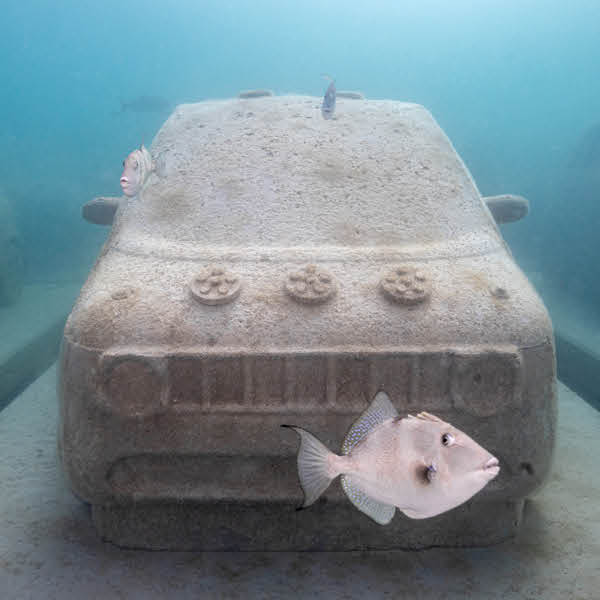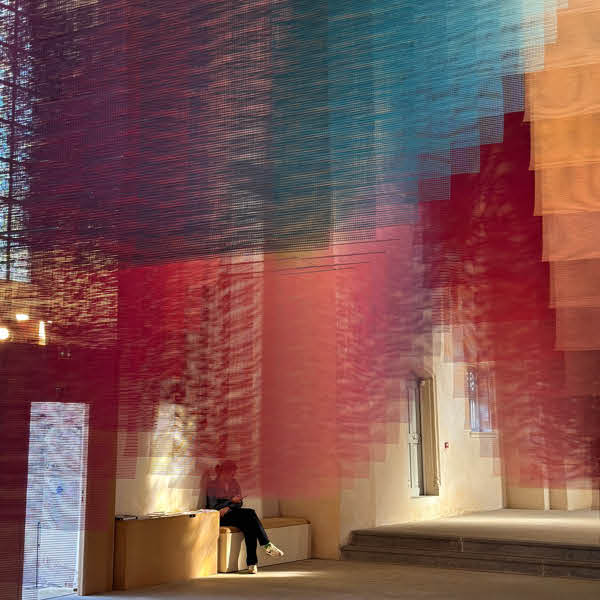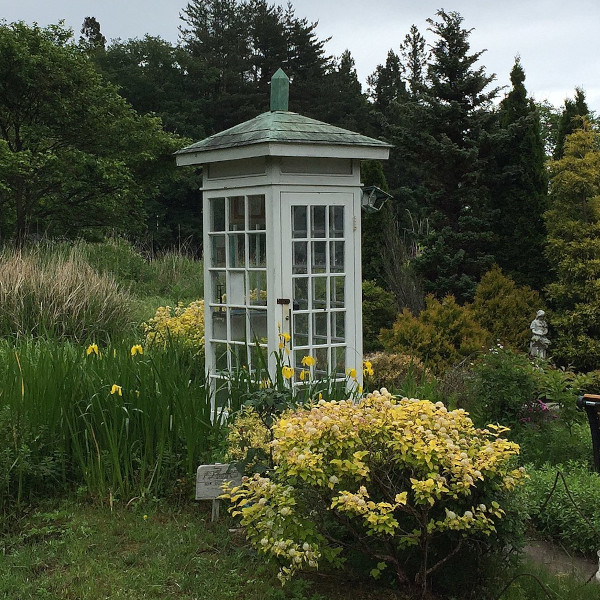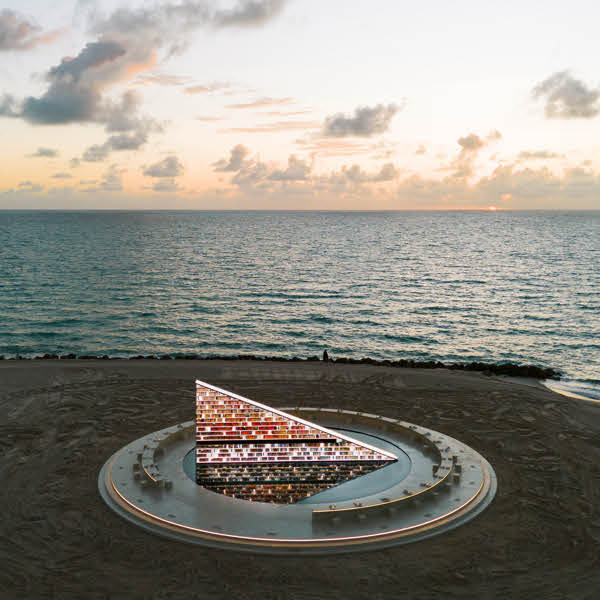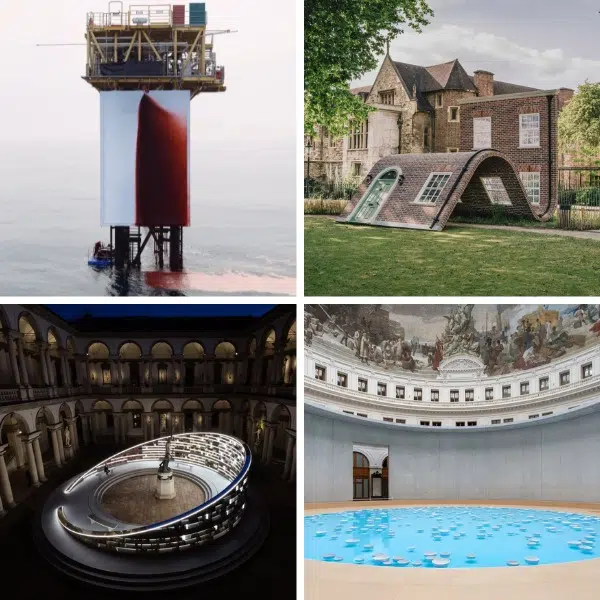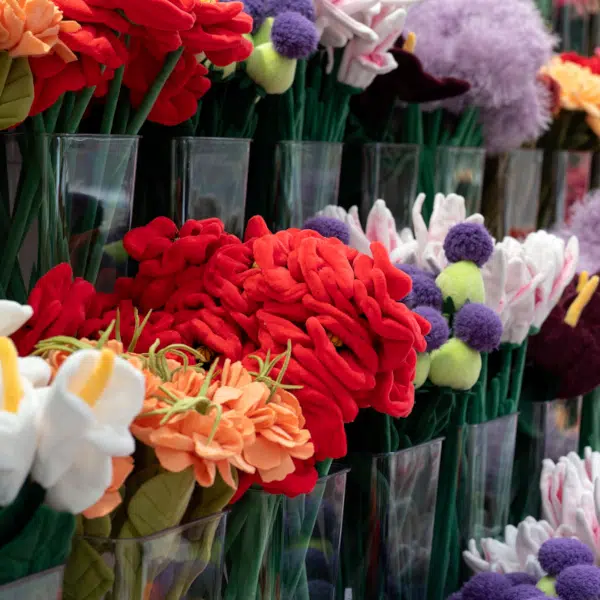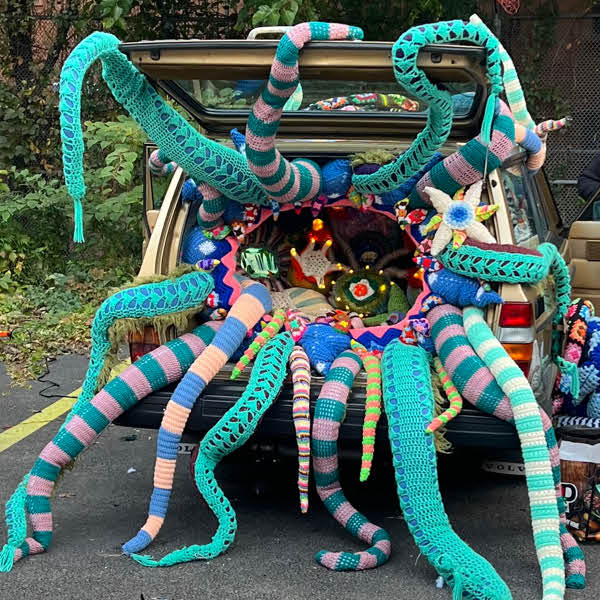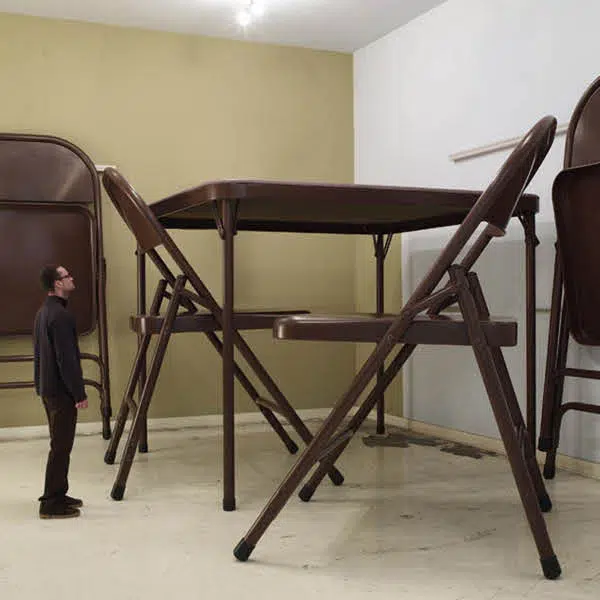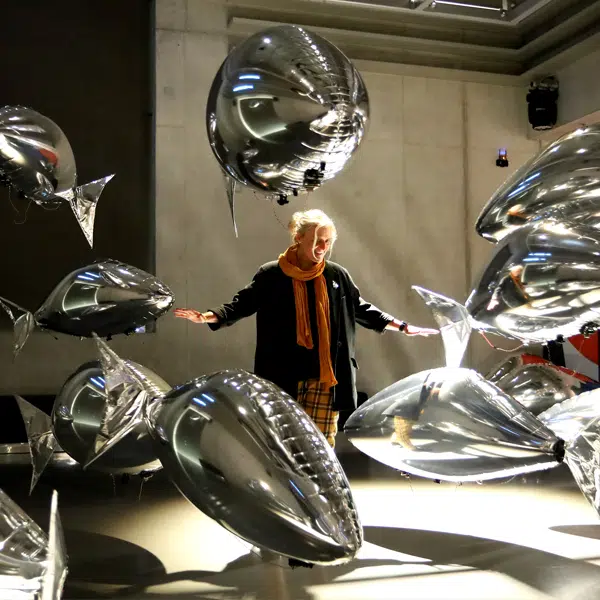
“Flood (Déferlante),” 2020
Argentinian visual artist Ana María Hernando has been surrounded by fabrics from a very young age. Growing up in a family that owned a textile factory—where she spent many summers working as a teenager—it is no surprise that this influence would find its way into her art. Since becoming a visual artist, she has worked in a variety of mediums, including painting, drawing, printmaking, and even incorporating poetry into her work. However, it was only 20 years ago that she began to explore textiles in her artistic practice.
“Textile came to me in a more sculptural way,” Hernando tells My Modern Met. “I began to do small, experimental installations at first. I started by incorporating embroideries. This is when all these memories of my grandmothers and my mother getting together to sew or crochet throughout entire afternoons at a time, hit me. I felt such a strong connection to this ritual of women coming together to do their craft and the place for this in their lives, and its cumulative, ongoing nature. It’s such a ‘transportable’ task. It’s the immediacy and the simplicity of it, how easy it is to bring it with you. Two needles and the threads will do. It strikes me as an adaptive and organic activity… I have been drawn to the energetic element of it as well, how textiles observe so much the energy of those working them and the actions of everyone in contact with them because of their porous quality. I believe this happens as a result of the very manual nature of textile working.”
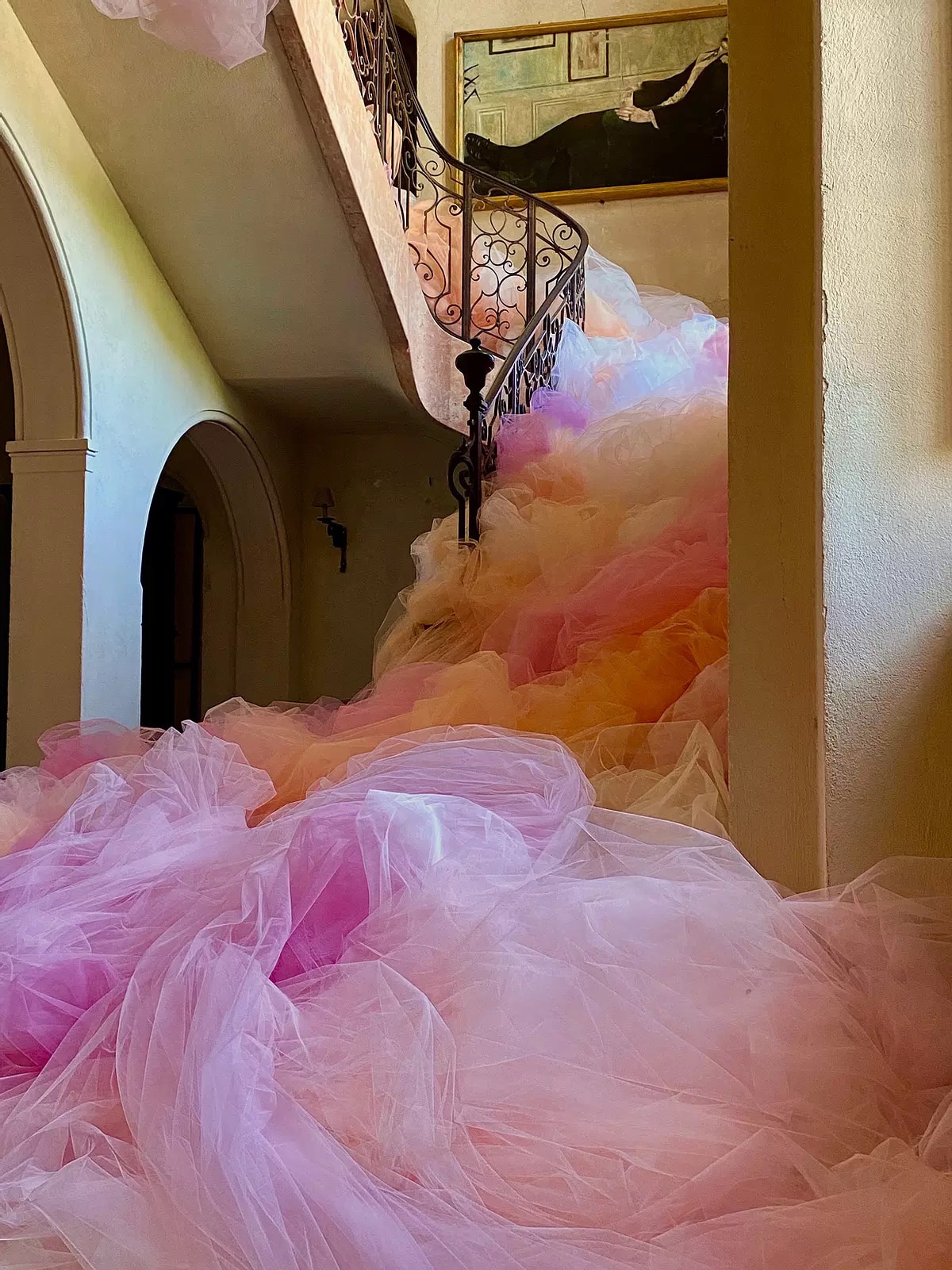
“Flood (Déferlante),” 2020
Hernando’s evocative work has brought her much recognition throughout her career. In 2020, the talented artist became the first woman to be awarded the Prix Henry Clews in Sculpture from the LaNapoule Art Foundation—which earned her a year-long residency at the Château de La Napoule in France. It was during this period that she created a series of site-specific installations using tulle fabric as her primary medium. Limited by the constraints of the pandemic, she had the opportunity to push her own artistic boundaries and experiment with the gauzy material.
“Before my latest work at the Château de la Napoule, I experimented with tulle for my first outdoor temporary installations in Colorado,” Hernando explains. “I learned about the effects of all sorts of external factors on tulle when exposed to the environment. The wind, the sun, the smog. It was fascinating to observe this relational quality of the fabric with the environment. When I arrived in France in early 2020, I had a show planned that had all kinds of installations—many with some tulle as a material—programmed around the grounds. But due to the pandemic, I had to change the plan completely. When the lockdown suddenly began in France, the only material I had at the studio was tulle—rolls of it. I didn’t have any material to build the structures, so I decided to use the Château, the very few people around me, and even myself as structures. There was so much I could experiment and do with tulle. The restrictions opened many new possibilities.”
Bolts of colorful tulle fabric flow from the most unlikely of places in the resulting site-specific installations. With a French château as her backdrop, Hernando’s striking pieces take on an ethereal quality reminiscent of fairytales or otherworldly dreamlands, though there is much more to uncover behind the gossamer threads of each sculpture. Charged with vibrant feminine energy, the works also subvert, challenge, and explore the traditional ideas associated with femininity.
“On the one hand, my work is about abundance, about this unstoppable energy,” Hernando reveals. “I am a passionate person. There is an urgency that I feel about the fact that we are alive. This flow of love, flow of life. And the urgency is in being awake, during this time that we are alive. And living with intent. This outpouring of love, and giving, is what I want to communicate. Also, my work is very much about the feminine. And it is very feminine. Big, feminine, unstoppable—in size and color. Unconstrained, unapologetic.”

“Flood,” 2020 (Photo: Rachel Berkowitz)
“For so many centuries women and the feminine have been uncomfortable for society to deal with, and there is still so much work to do,” she continues. “I want my work to have a quality of strength, strong in its feminine nature. I want this loudness that the feminine can bring to be really present. And I must say, in a way, there’s a bit of a trap I got myself into—going back to my work with tulle. Usually, people associate tulle with weddings and fairytales, and I can see why people go there. But I don’t want to give people a fairytale. These sculptures are about power. Often power seems like it can only be found in hard materials, in stringent, strict forms. I want to reclaim the idea of what power can look like, and to show that it can also be found in this seemingly soft element tulle looks like. This is why the scale, and the layering, of these pieces is so important to me.”
To see more of Hernando's incredible work, visit her website or follow her on Instagram. You can also view several of her pieces at upcoming exhibitions in 2021—Fervor, opening at the Denver Botanic Gardens on September 11, and the Covid-19 Memorial for the Biennial of the Americas opening at the Museo de las Américas in Denver on September 21.
Argentinian visual artist Ana María Hernando creates ethereal site-specific installations with bolts of tulle flowing from the most unlikely of places.
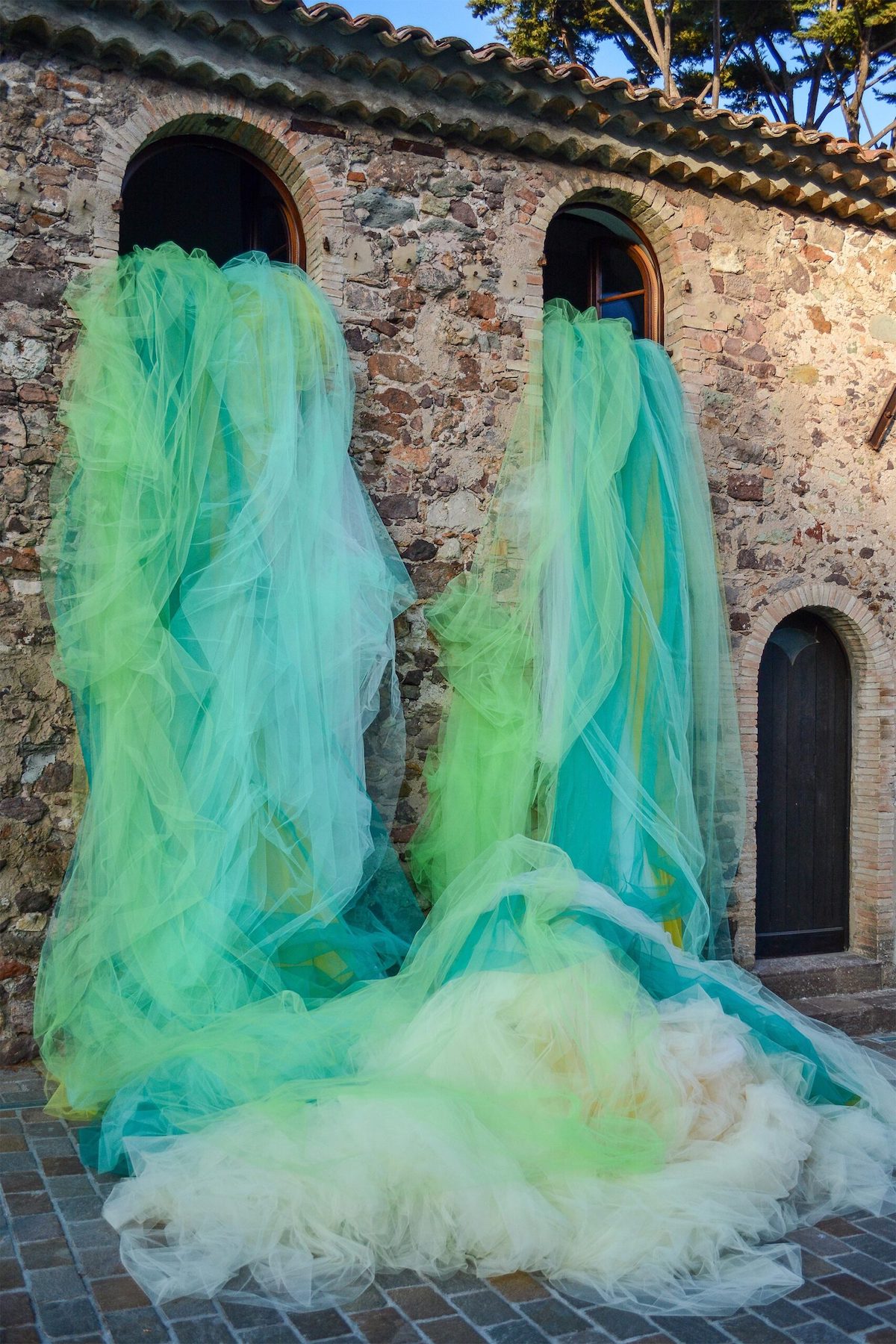
“Waterfall,” 2020 (Photo: Rachel Berkowitz)

“Waterfall,” 2020 (Photo: Rachel Berkowitz)
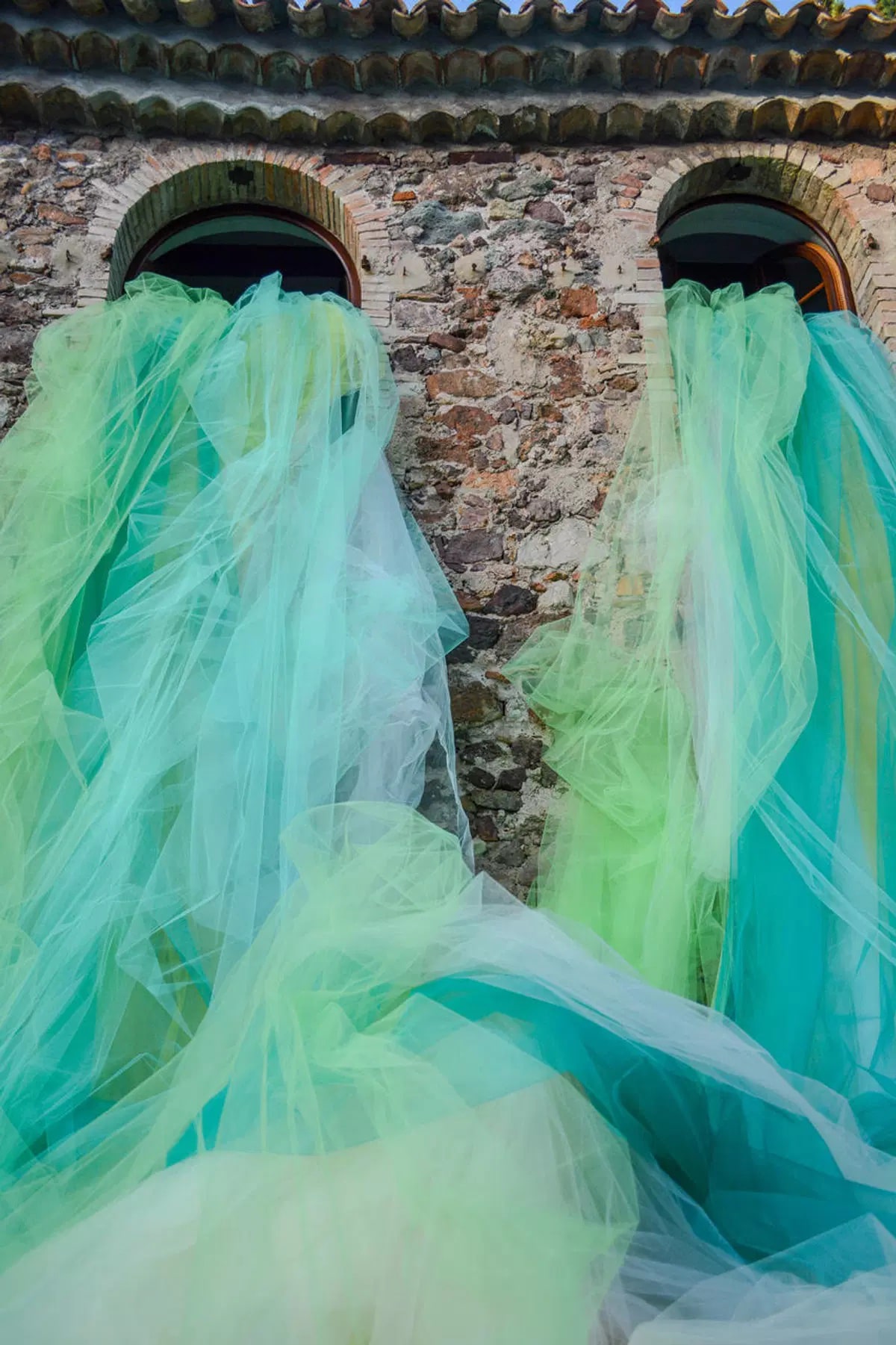
“Waterfall,” Detail, 2020 (Photo: Rachel Berkowitz)

“Desborde (Overflow),” 2020
Hernando has been surrounded by textiles since she was a child and always seeks to incorporate them into her artwork.
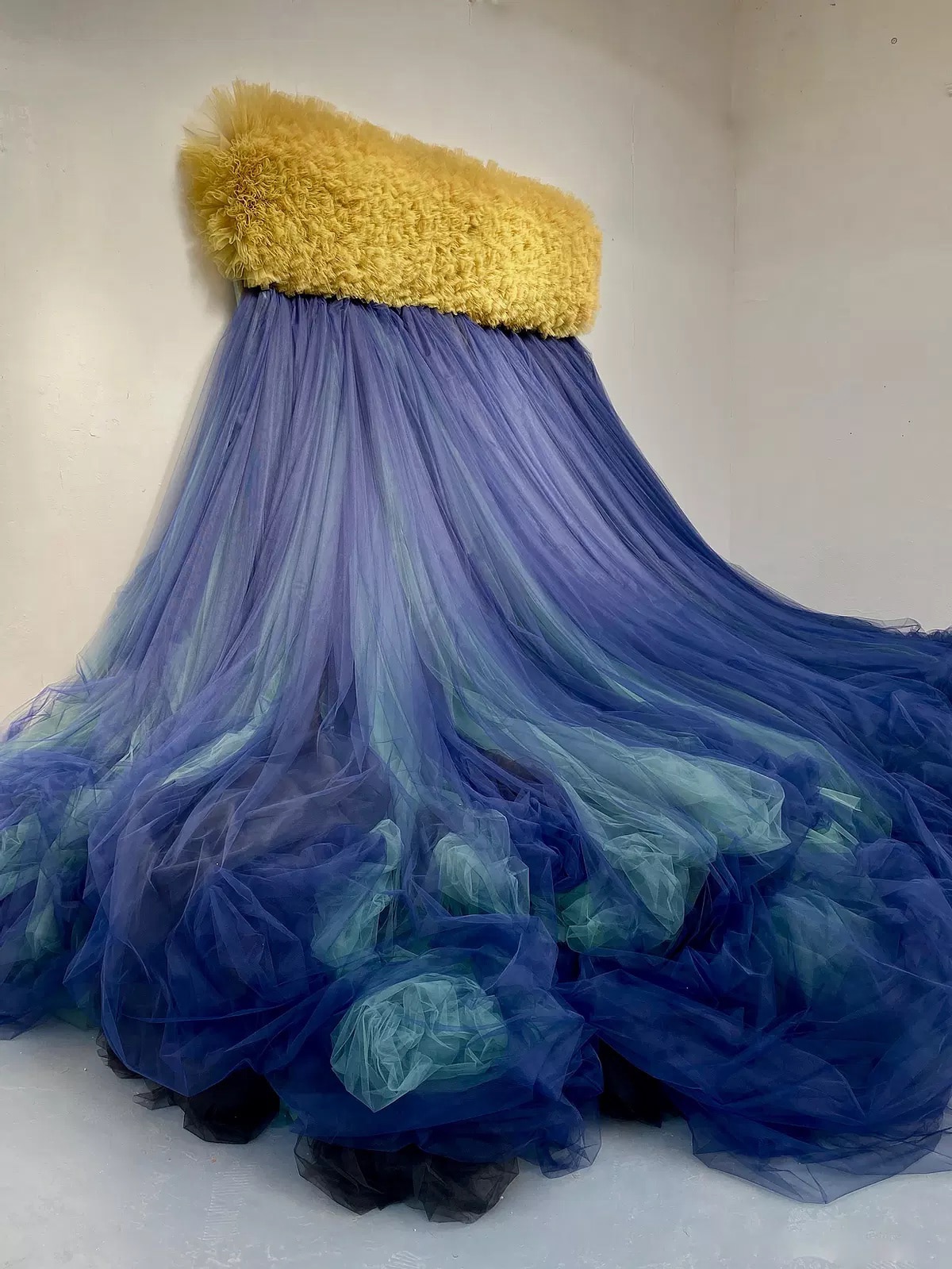
“Solo escuchaba el aire (Only the Air Was Heard),” 2020

“Without the Weight of Being Awake (Sin el peso de estar depiertos),” 2020 (Photo: Rachel Berkowitz)
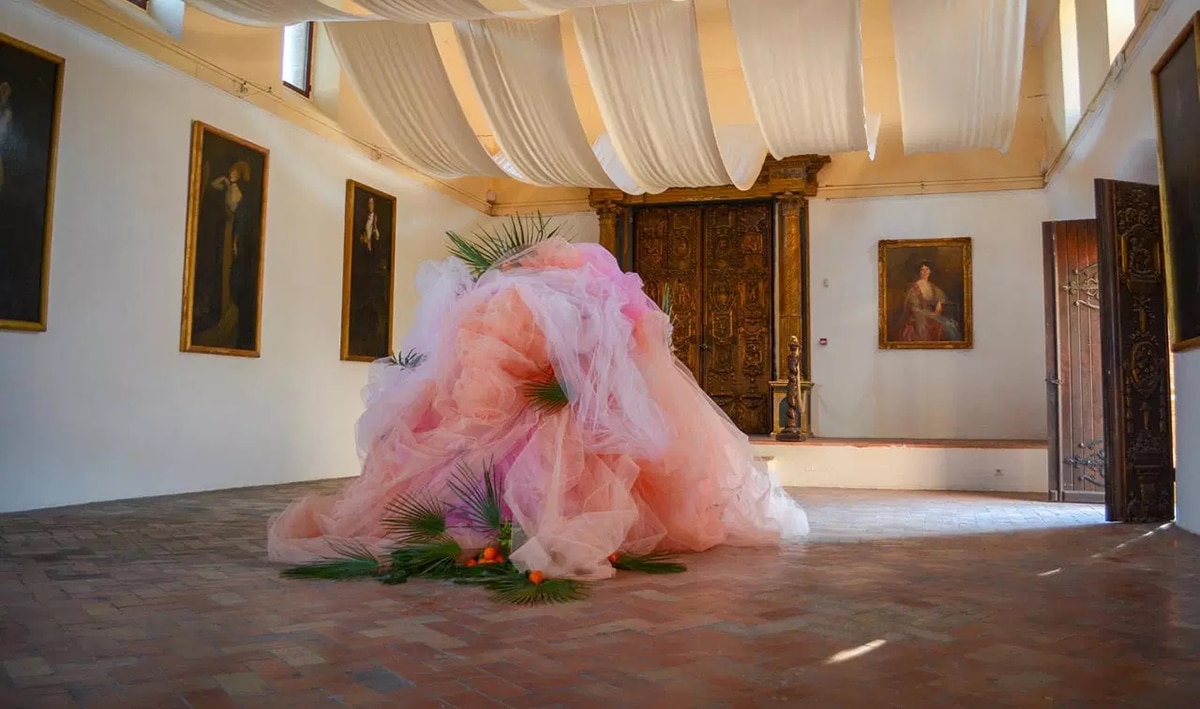
“Epiphany,” 2020 (Photo: Rachel Berkowitz)

“Ñusta Espléndida (Cantamos fuerte para que nos escuchan); Splendid Ñusta (Singing Loudly To Be Heard),” 2020
These tulle installations are charged with vibrant feminine energy but also subvert, challenge, and explore the traditional ideas associated with femininity.
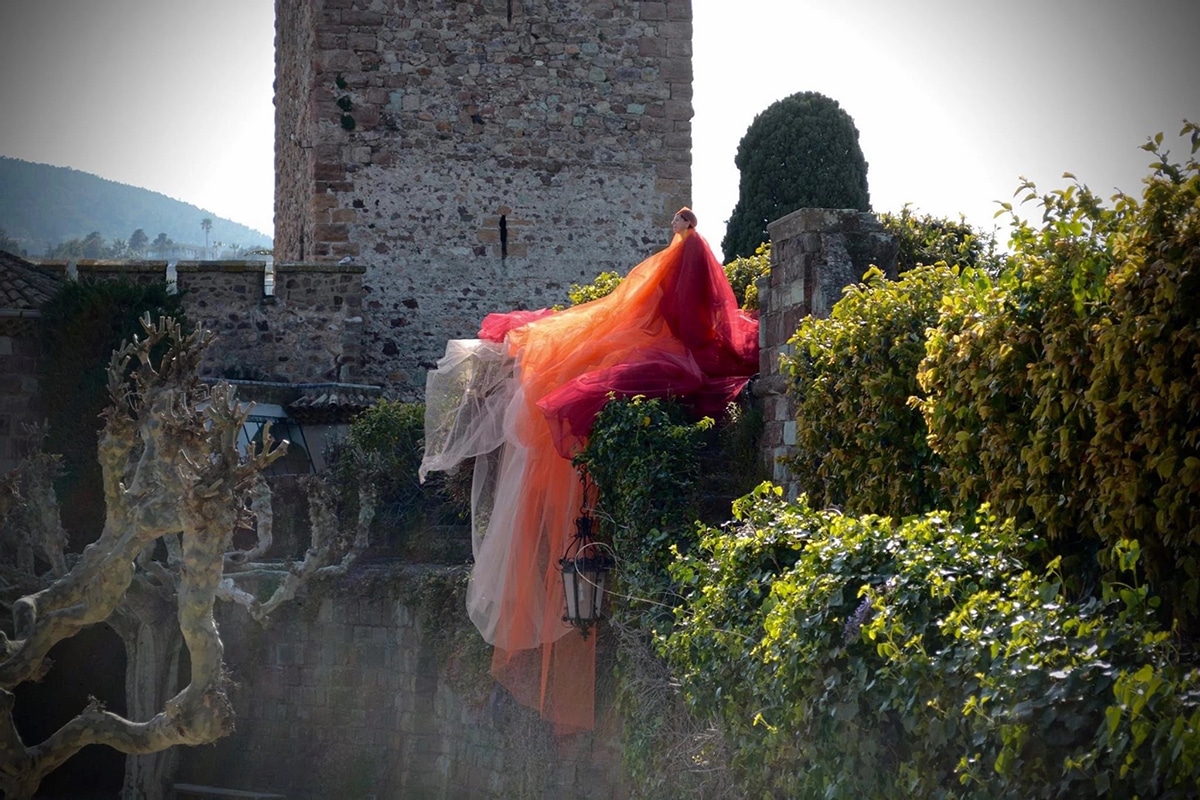
“A Visit From the Mountain,” Performative Installation, 2020 (Photo: Rachel Berkowitz)

“To Make a Place for a Bird To Land,” 2020 (Photo: Rachel Berkowitz)

“To Make a Place for a Bird To Land,” Detail, 2020 (Photo: Rachel Berkowitz)
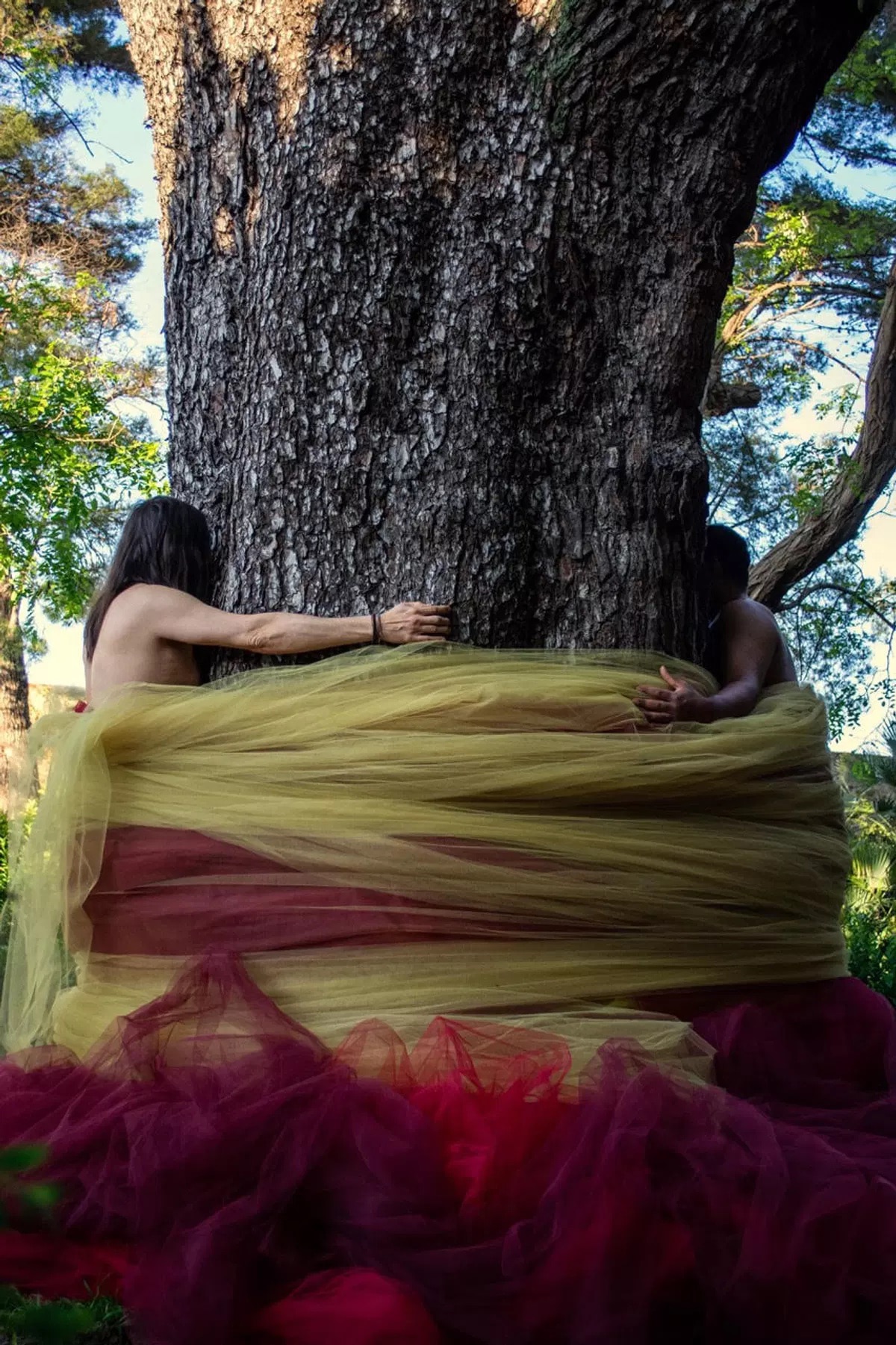
“Unmoored From the Familiar Expectations,” Performative Installation, 2020 (Photo: Rachel Berkowitz) Special thanks to artists Christopher Kojzar and Alessandro Sciaraffa for their participation.












































































